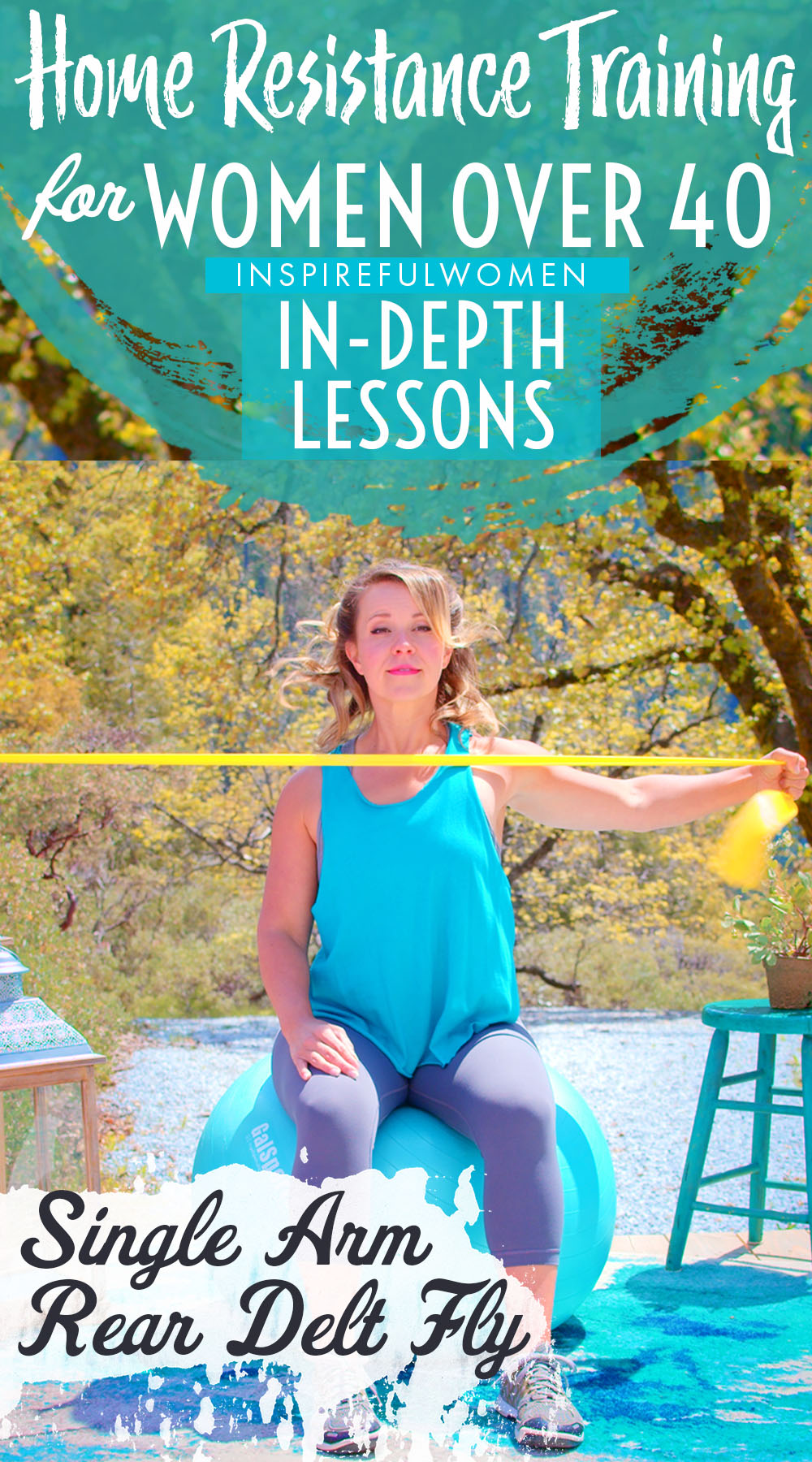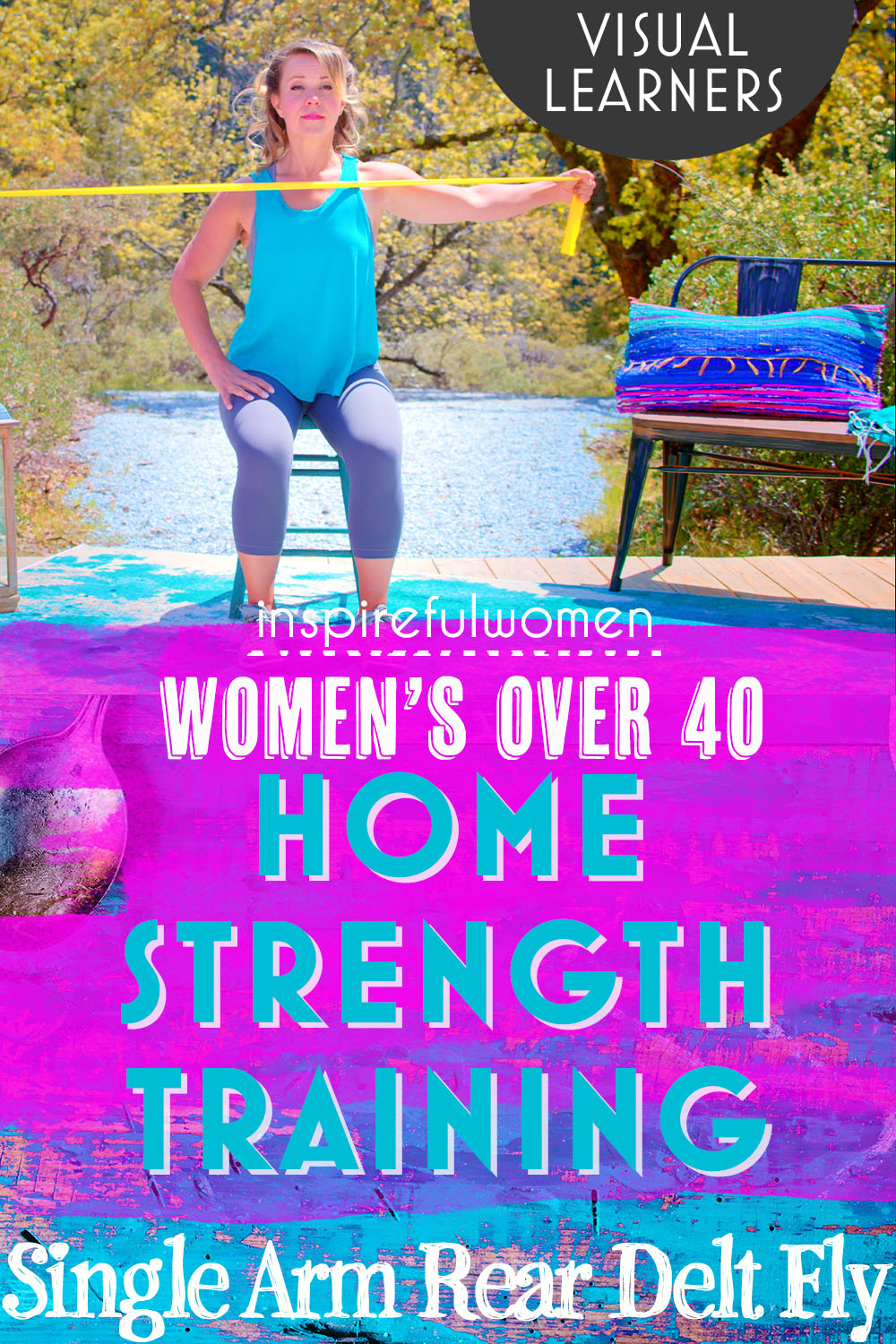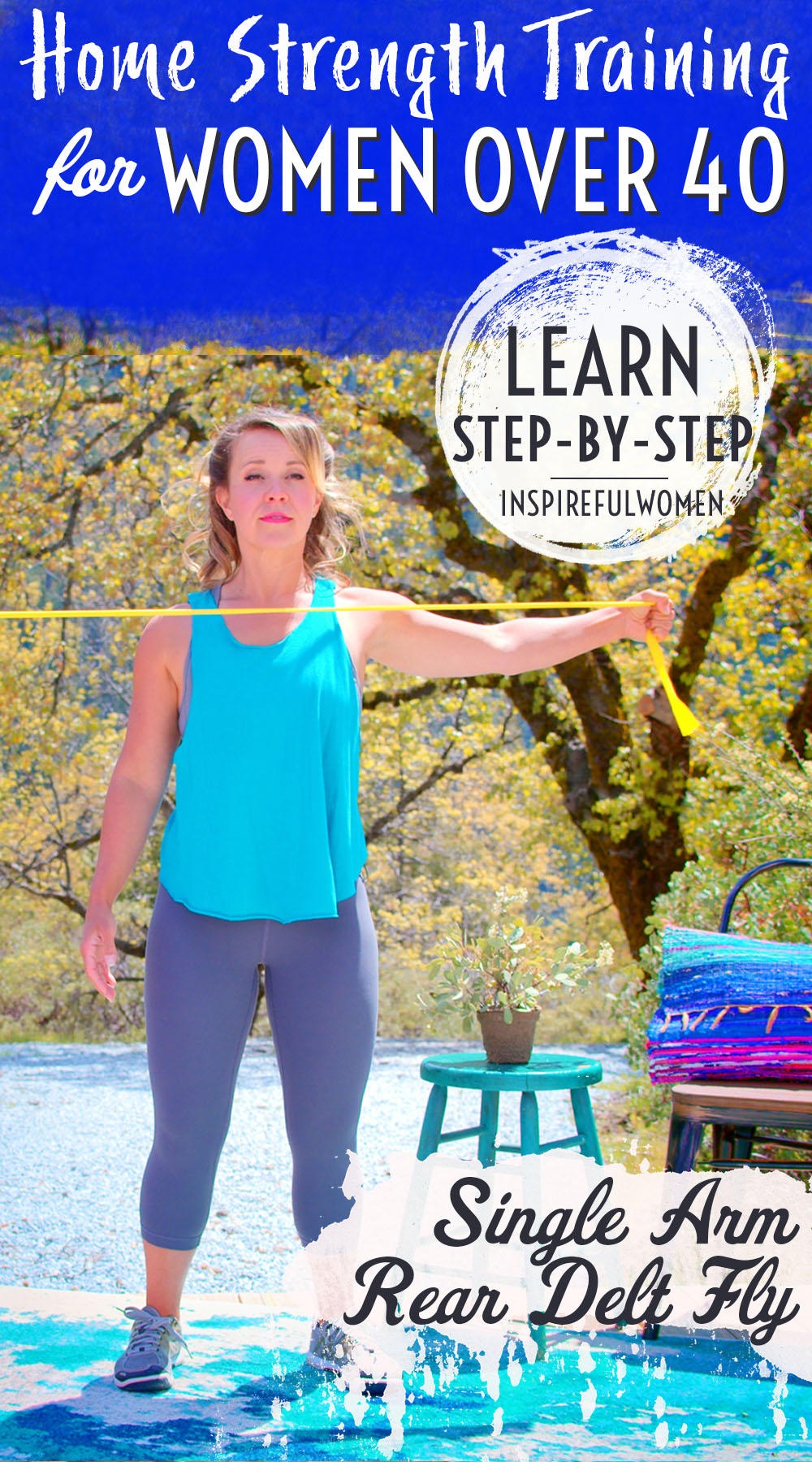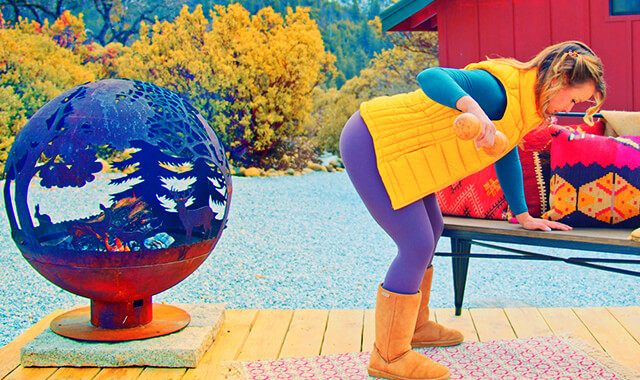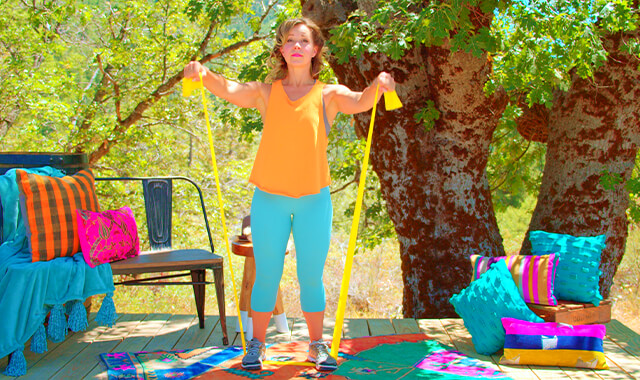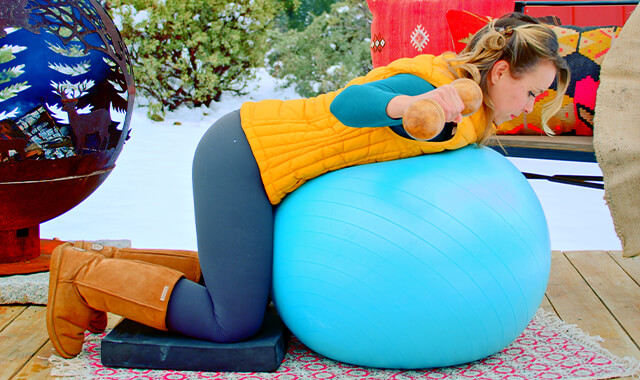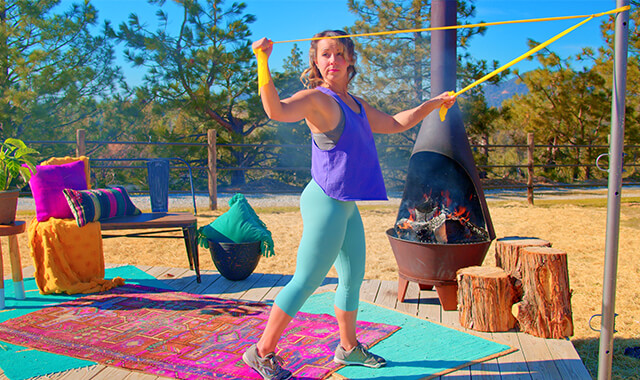Single Arm Rear Delt Band Fly
How to Do the Standing Single Arm Rear Delt Fly with Band | In-Depth Guide [VISUAL LEARNERS] Beginner
Proper Form, Common Mistakes, & Variations | Home Resistance Training
WHAT DO YOU WANT TO SEE?
QUICK DEMO
QUICK DEMO
MUSCLES THIS WORKS
MUSCLES
MAIN MUSCLES WORKED IN the Standing Single Arm Rear Delt Band Fly
REAR DELTOID
OTHER MUSCLES WORKED:
- Mid and lower trapezius
- Rhomboids
- Latissimus dorsi
- Serratus anterior
- Pectoralis
- Lateral deltoid
STARTING POINTERS
Starting Pointers
WHAT WE'RE DOING TODAY
Other names for this exercise: Standing Single Arm Rear Delt Raise
ALL WE'RE DOING:
Move your arm from in front of you out to your side. That's it!
This standing single-arm rear delt fly is a simple yet effective shoulder exercise that can be done with a resistance band to activate the posterior deltoid muscles. With consistent practice, you can increase your mobility and reduce any pain or tightness in the shoulder area.
I really like this rear delt move because it's easy to make it challenging enough to really feel the muscle working, and it's in standing! Easier than the all-fours versions on hands and knees.
This version of the rear delt raise focuses on moving the arm back (shoulder extension) but does not target rotation of the upper arm (shoulder external rotation). Using one arm at a time allows you to compare your movement and strength from each side, and to really focus on feeling how the shoulder blade and arm movement are separate but work together.
The muscles of the upper back pull the shoulder blade back and hold it still as the arm moves in the shoulder socket. This version can be done with a shorter resistance band - it only needs to run from the anchor to one hand. Using just a single arm may allow you to use a heavier band because you will not need to work as hard to keep the torso stable.
HOW TO DO THE EXERCISE
LOOKS
HOW The Standing Single Arm Rear Delt Band Fly SHAPE OUR BODY
Toned, balanced, capped shoulders, good posture.
PROPER FORM
PROPER FORM: Standing Single Arm Rear Delt Band Fly
EQUIPMENT, SETS & REPS
EQUIPMENT
Main set (3: Light/Med/Heavy)
X-Heavy Band (I recommend getting this too if you plan to use resistance bands frequently).
SUGGESTED STARTING WEIGHT FOR WOMEN:
Light to moderate resistance bands
SETS & REPS:
2 sets of 8 reps
PACE:
Moderate pull back - with control and back stability, and slow controlled return to start.
WAYS TO ADJUST RESISTANCE FOR BANDS:
- Double them up - fold them over or use two.
- Shorten or lengthen them.
BODY POSITION
BODY POSITION FOR THE Standing Single Arm Rear Delt Band Fly
BAND: Mount the resistance band at mid chest height - in a straight line from your hand is when your arm is in the starting position. Stand sideways to the anchor, with your working arm on the side opposite from the anchor.
WORKING ARM (furthest from anchor): approximately 70 - 90 degrees of flexion, elbow straight but soft or slightly bent if it is more comfortable. Non-working arm can be down by your side or your hand on the top of the pelvis.
FEET: Shoulder width apart, toes forward.
BODY STANCE: Knees slightly bent, neutral spine (includes neck), sternum lifted, chest wide.
HAND: Hold the band with a neutral grip: palm facing in - see variations below for options.
HOW TO DO
HOW TO DO the Standing One Arm Rear Delt Reverse Fly - band
CUE: Focus on feeling the difference between moving the shoulder blade and moving the arm.
Pull the shoulder blade of your working arm in towards the spine and down, then pull your arm back (horizontal abduction) and slightly behind your torso.
Hold at the end of your range and then control the pull of the band as you move your arm back to the starting position. Begin the next rep.
Keep in mind your rear delt is most active during the last part of the contraction, when your arm is out to your side & behind the torso, so don't skip that part of the range of motion.
HOW TO SAFELY GET OUT OF THE EXERCISE
From the starting position, release the band.
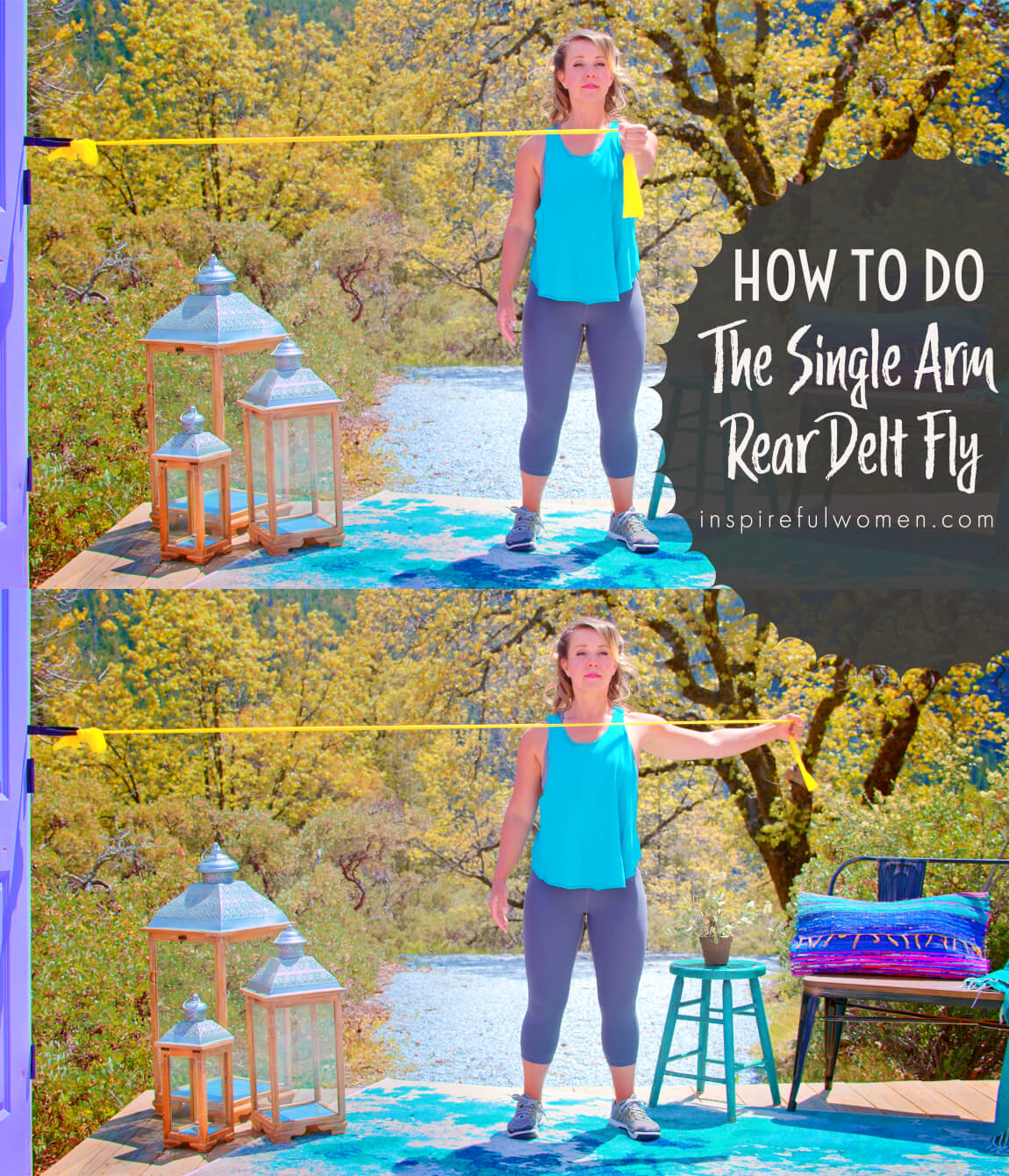
COMMON MISTAKES
COMMON MISTAKES
WHAT TO AVOID WITH THE Standing Single Arm Rear Delt Band Fly
KEY TIP:
Guess what? Good news! Many avoids are the same for most movements. Once you learn the basics, there's really only a few extra avoids for each individual movement.
1. Avoid Rotating Upper Back
AVOID: Rotating your upper back instead of retracting the shoulder blade or extending the arm
WHY NOT?
- This would decrease the muscle activity of the scapular retractors and the rear deltoid.
WHAT TO DO:
- Keep your upper body facing forward, shoulders squared
- Concentrate on feeling the shoulder blade move back and then the arm move back.
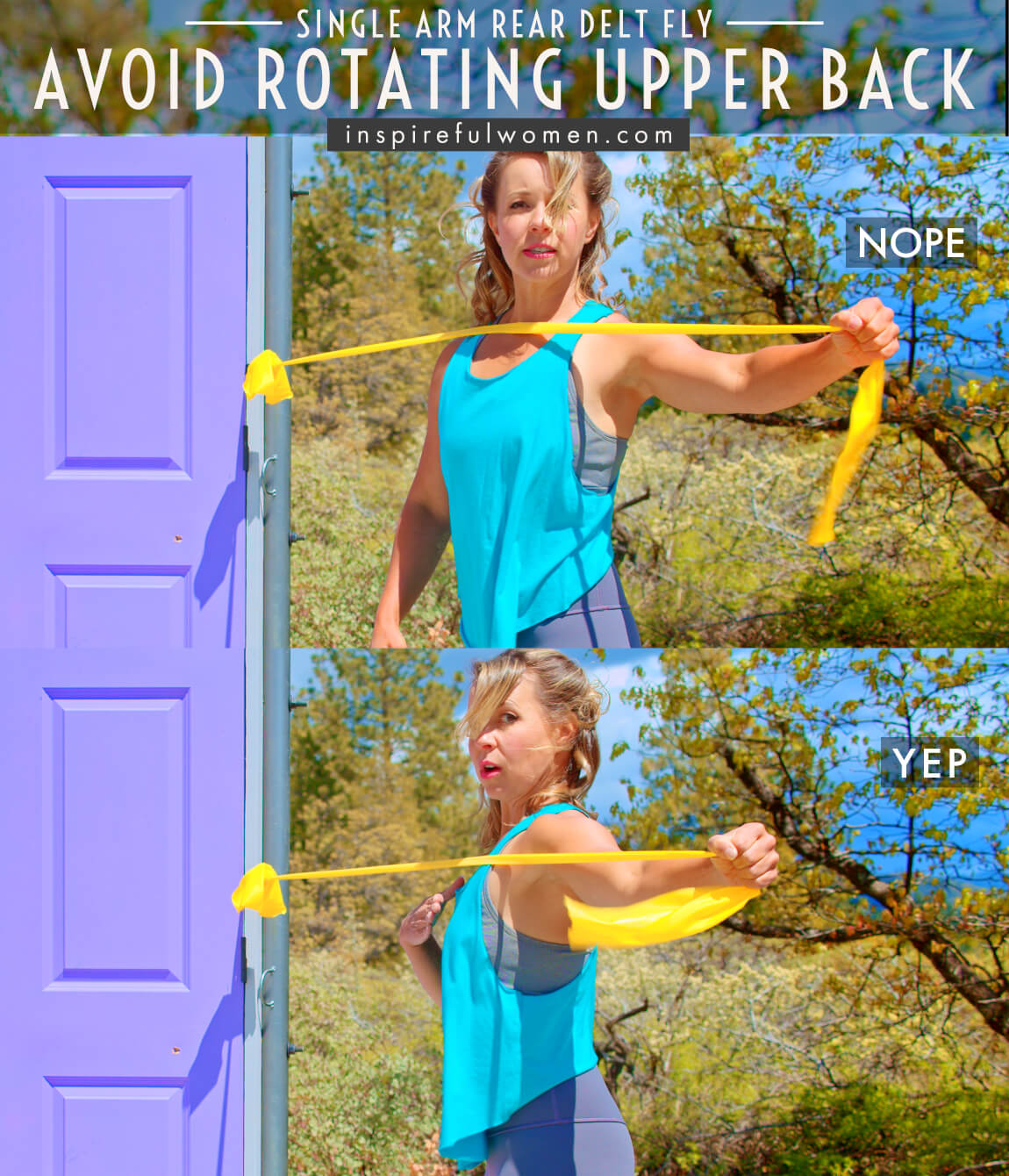
2. Avoid Arching Low Back
AVOID: Arching your low back.
WHY NOT?
- Pressure or discomfort in your low back.
- Can cause low back joint injury, muscle strain, or damage over time.
WHAT TO DO:
- Troubleshooting suggested fixes
- Poor core strength: activate your abdominal muscles, or choose a position with more support.
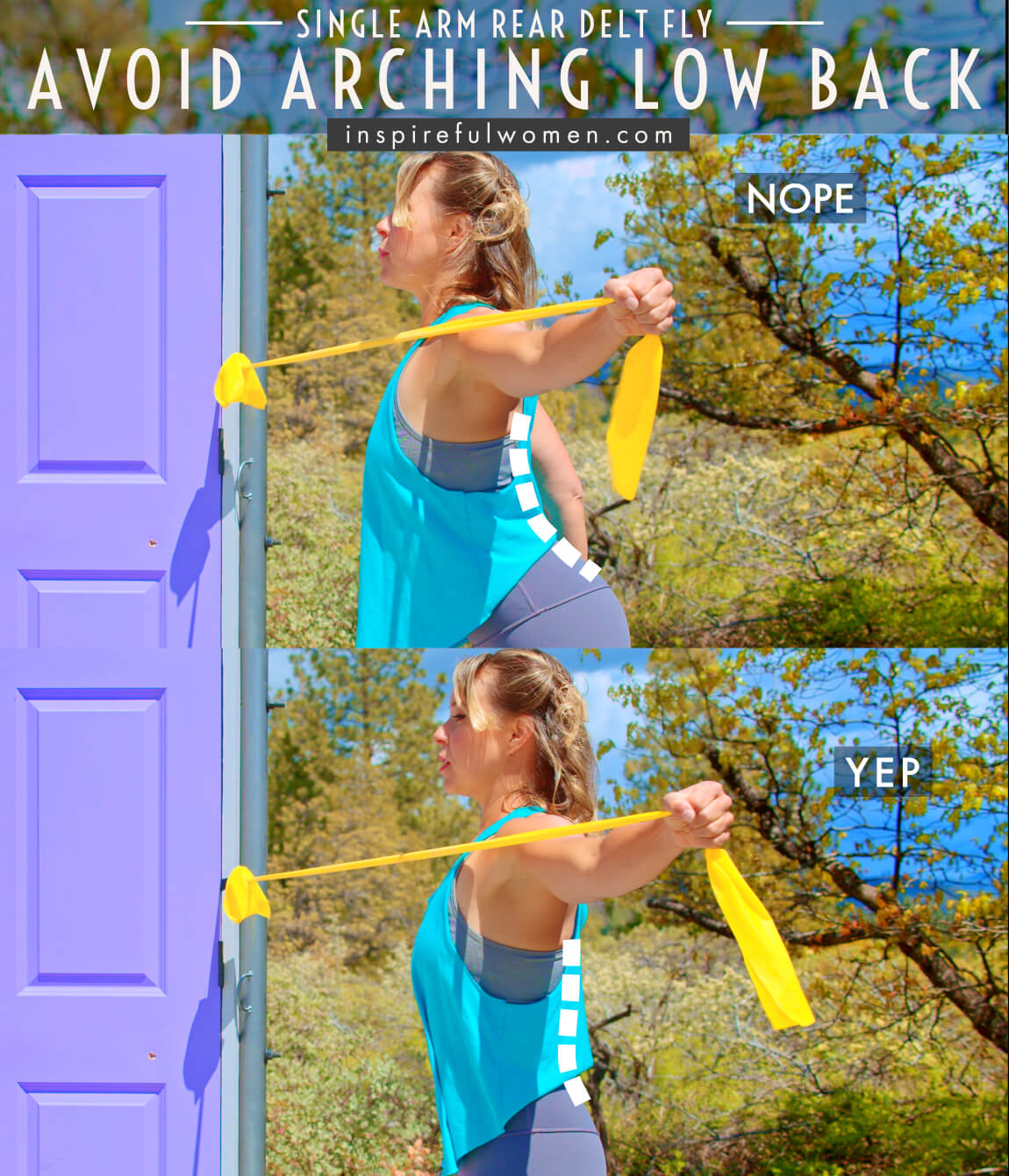
3. Avoid Rounding Low Back
AVOID: Rounding (flexing) your back.
WHY NOT?
- Can lead to muscle strain or low back joint injury.
- Will decrease the activation of the targeted muscles.
WHAT TO DO:
- Maintain a neutral spine position.
- This can be a result of poor back extensor strength
- Choose a position with more support.
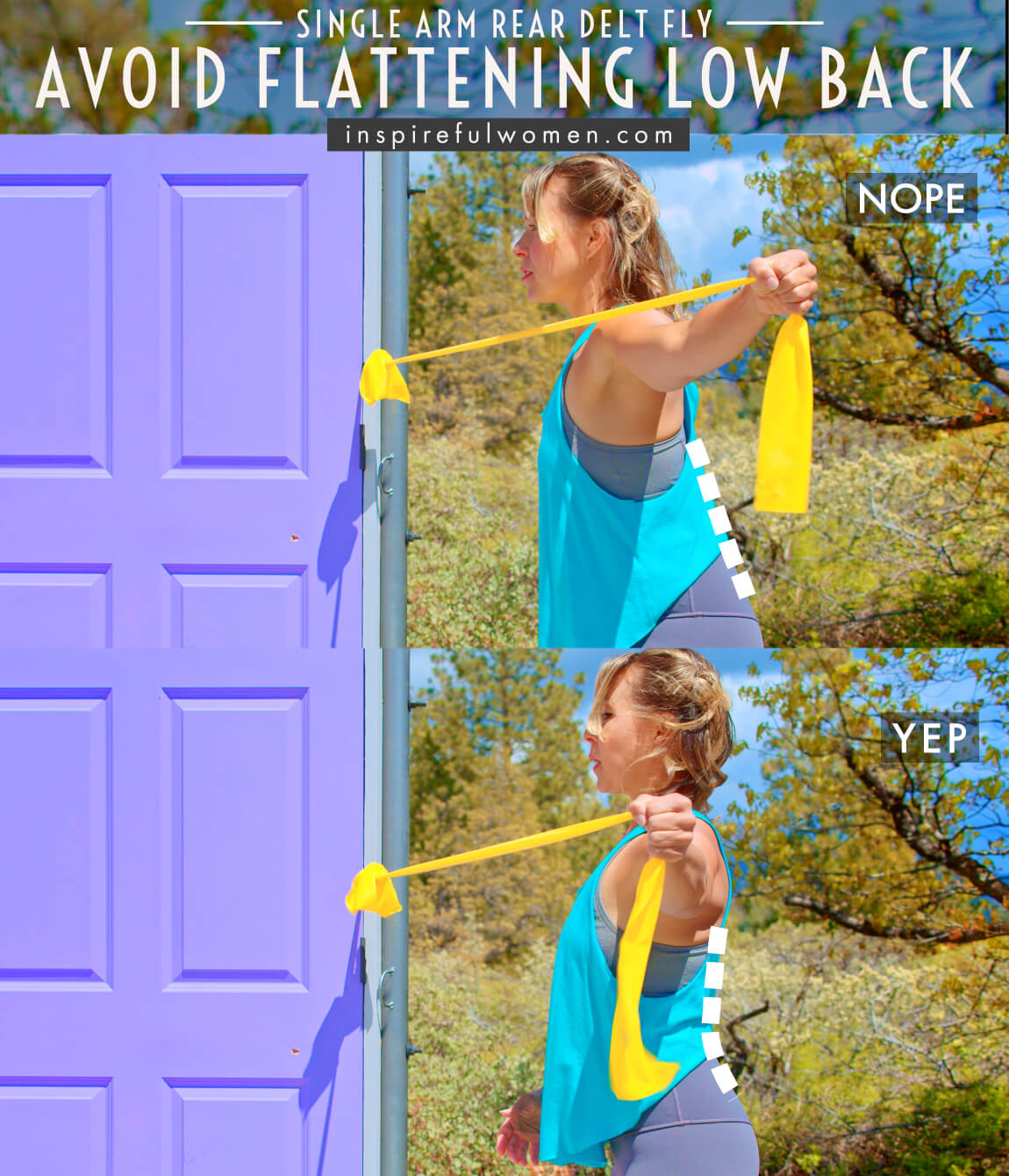
4. Avoid Bending Wrist
AVOID: Bending at the wrists.
WHY NOT?
- Poor alignment (bent forward or backward) or repetitive movement through the wrist can lead to joint and/or soft tissue irritation or injury over time.
WHAT TO DO:
- Your wrists should be in line with your forearm and should be still throughout the exercise.
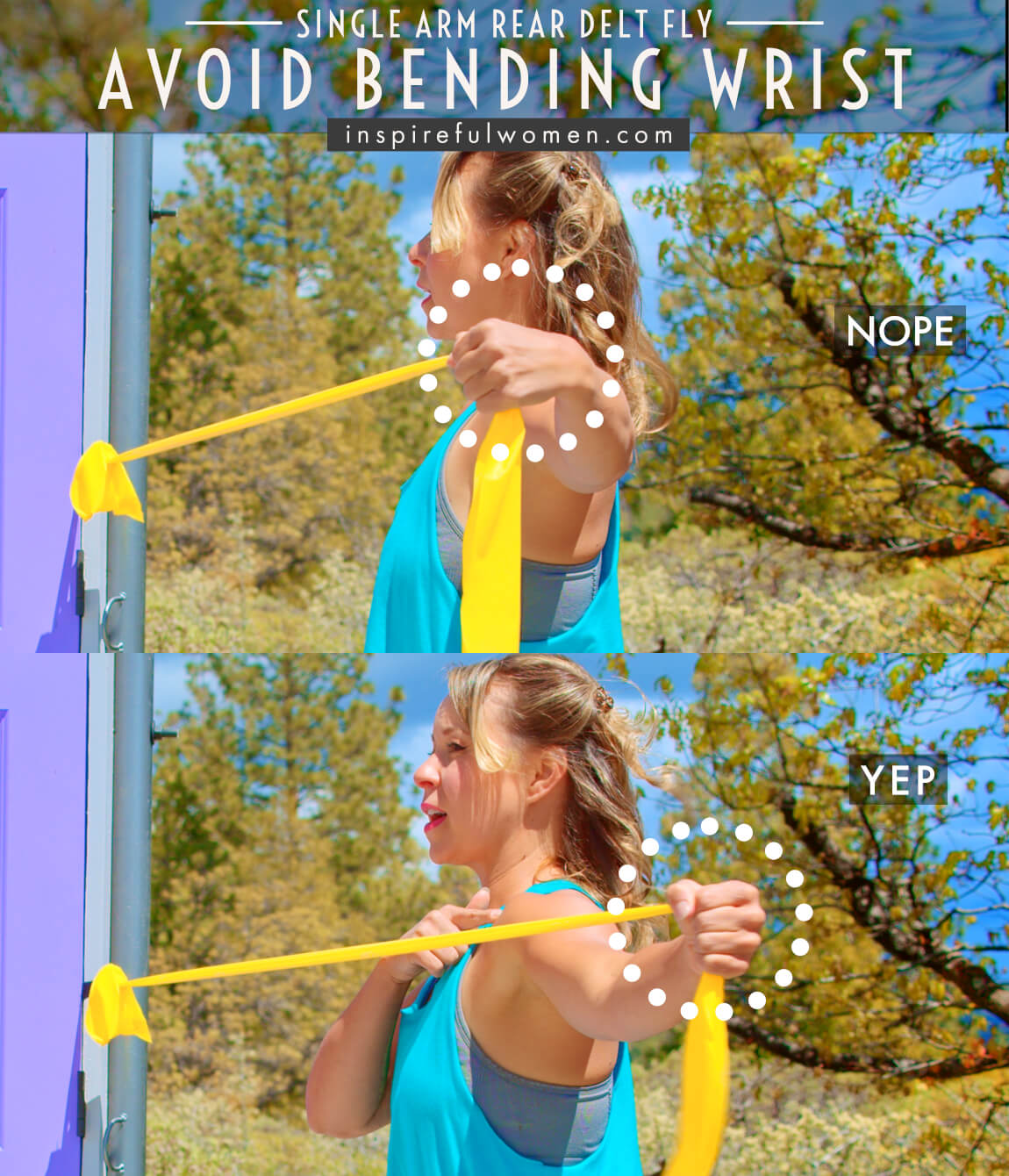
5. Avoid Too Much Resistance
AVOID: Too much resistance.
WHY NOT:
- The deltoid will become most active towards the end of the movement when the upper arm is behind your shoulder joint. Increasing the weight may prevent you from being able to get to this position.
- Increasing the weight can put too much strain on the front of the shoulder joint at the end of its range of shoulder extension.
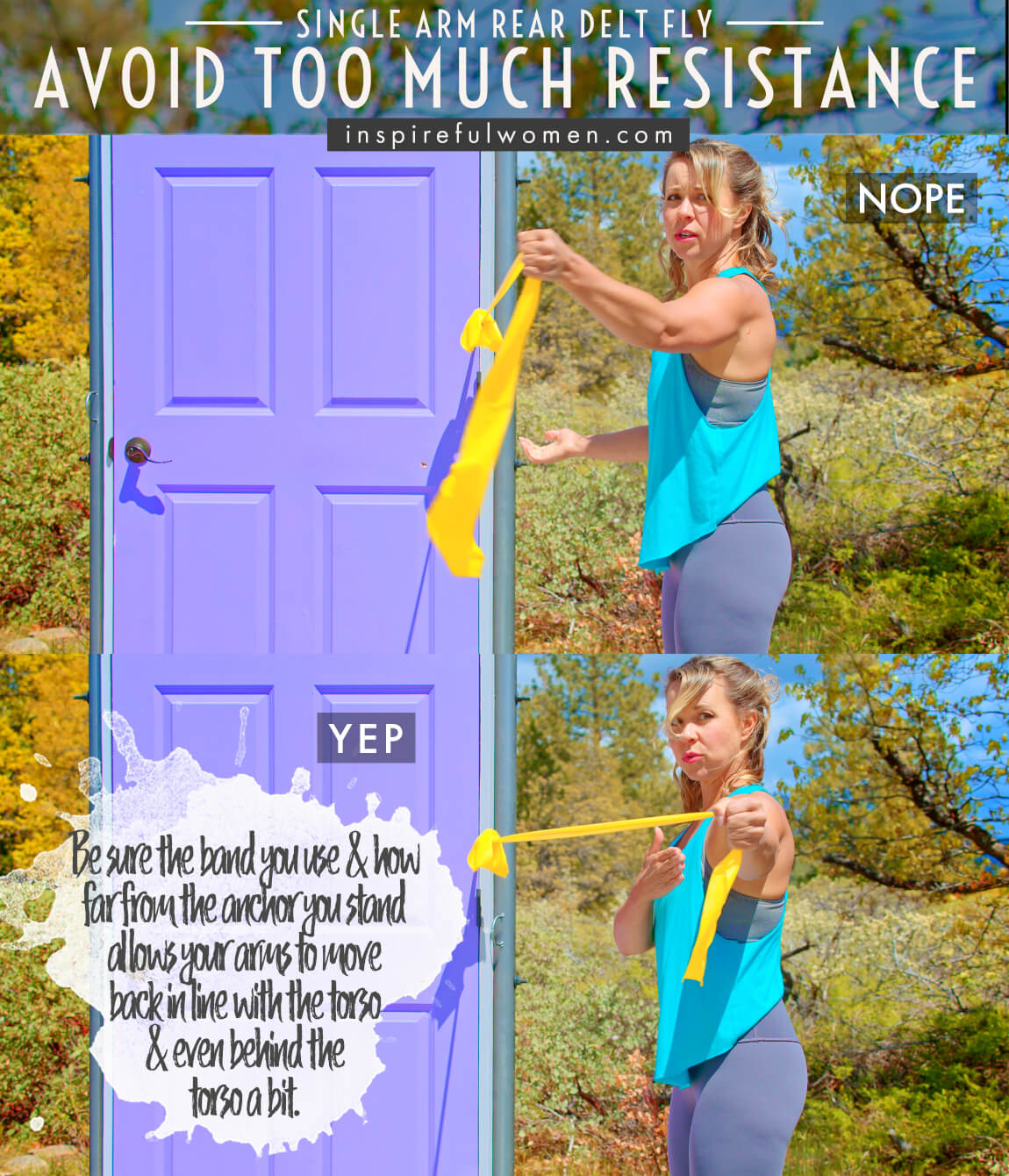
6. Avoid Rotating Torso
AVOID: Letting your torso rotate with the arm
WHAT TO DO:
- Keep the pelvis and shoulders square to the front.
- The goal of the exercise is to isolate the movement to the shoulder joints and to work the core muscles to stabilize the spine in neutral.

VARIATIONS
VARIATIONS
VARIATIONS OF the Standing Single Arm Rear Delt Band Fly
Palm Facing Down
Palm Down Single Arm Rear Delt Band Fly
Palms facing down (called pronated grip) - this will get more of a couple smaller muscles involved called more teres major, subscapularis, which is a nice variation.
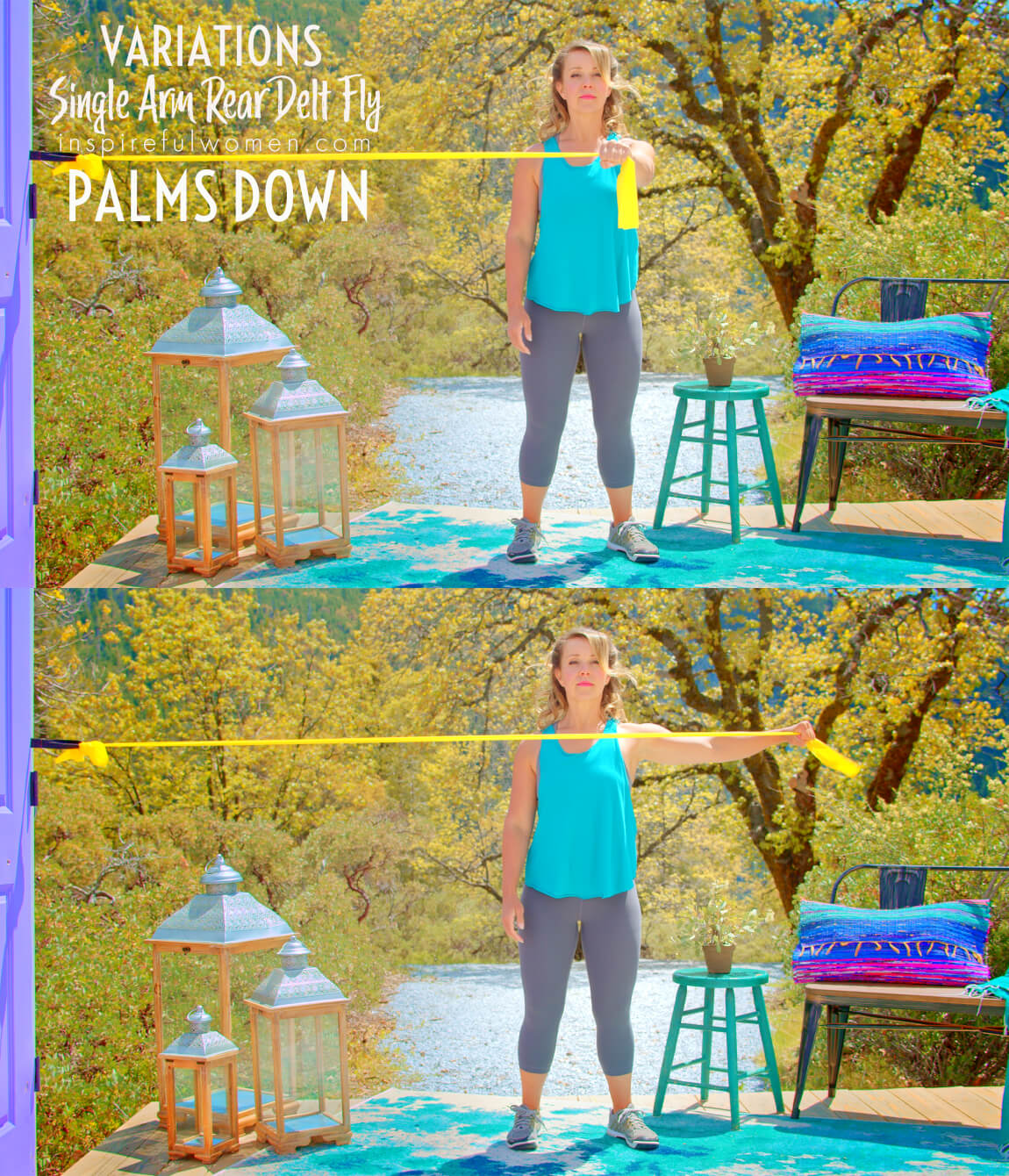
Palm UP
Supinated Grip Single Arm Rear Delt Band Fly
Palms facing up and upper arm facing up (external rotation of the upper arm )- more rear deltoid, infraspinatus and teres minor.

Seated
Seated Single Arm Rear Delt Band Fly
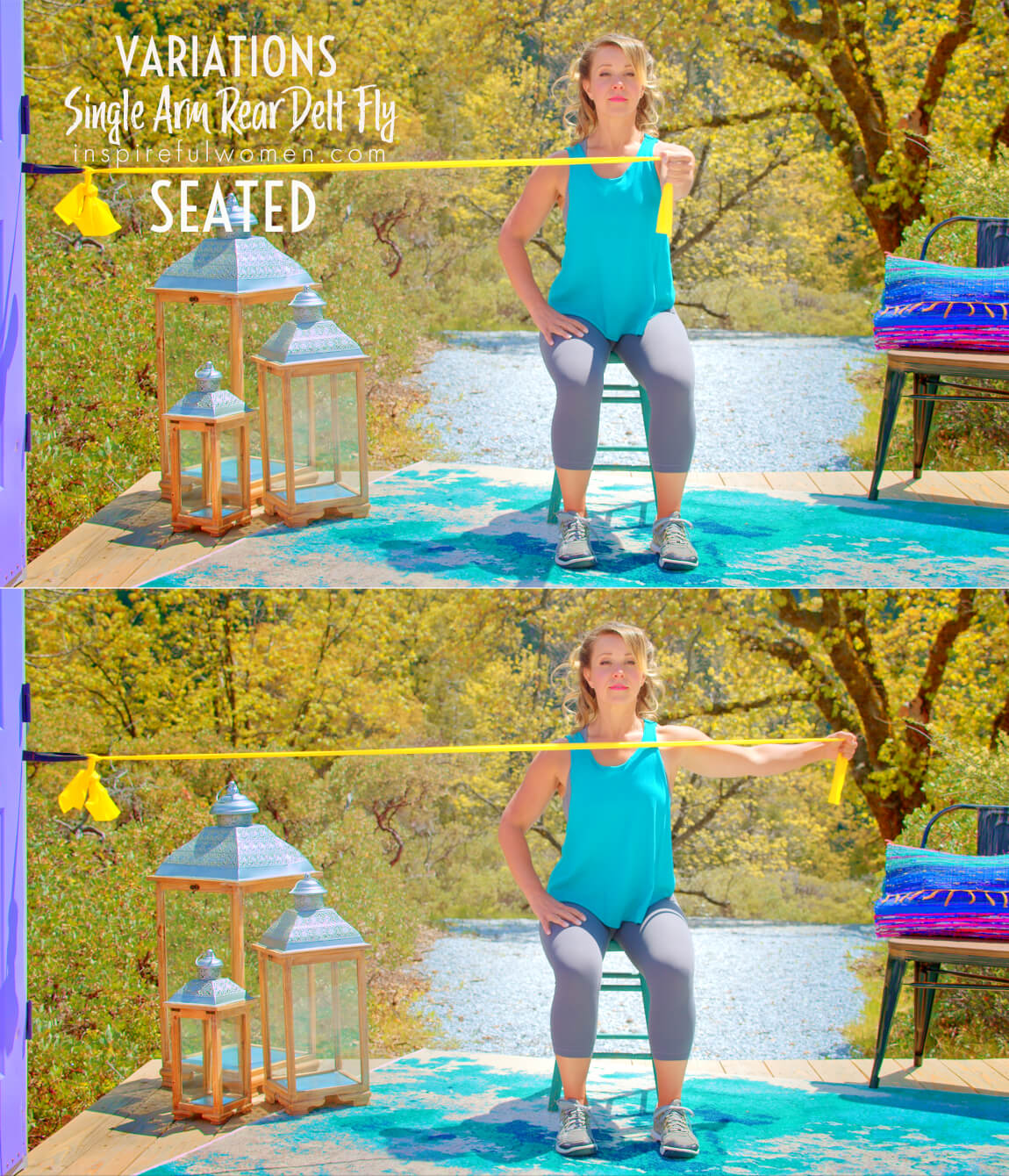

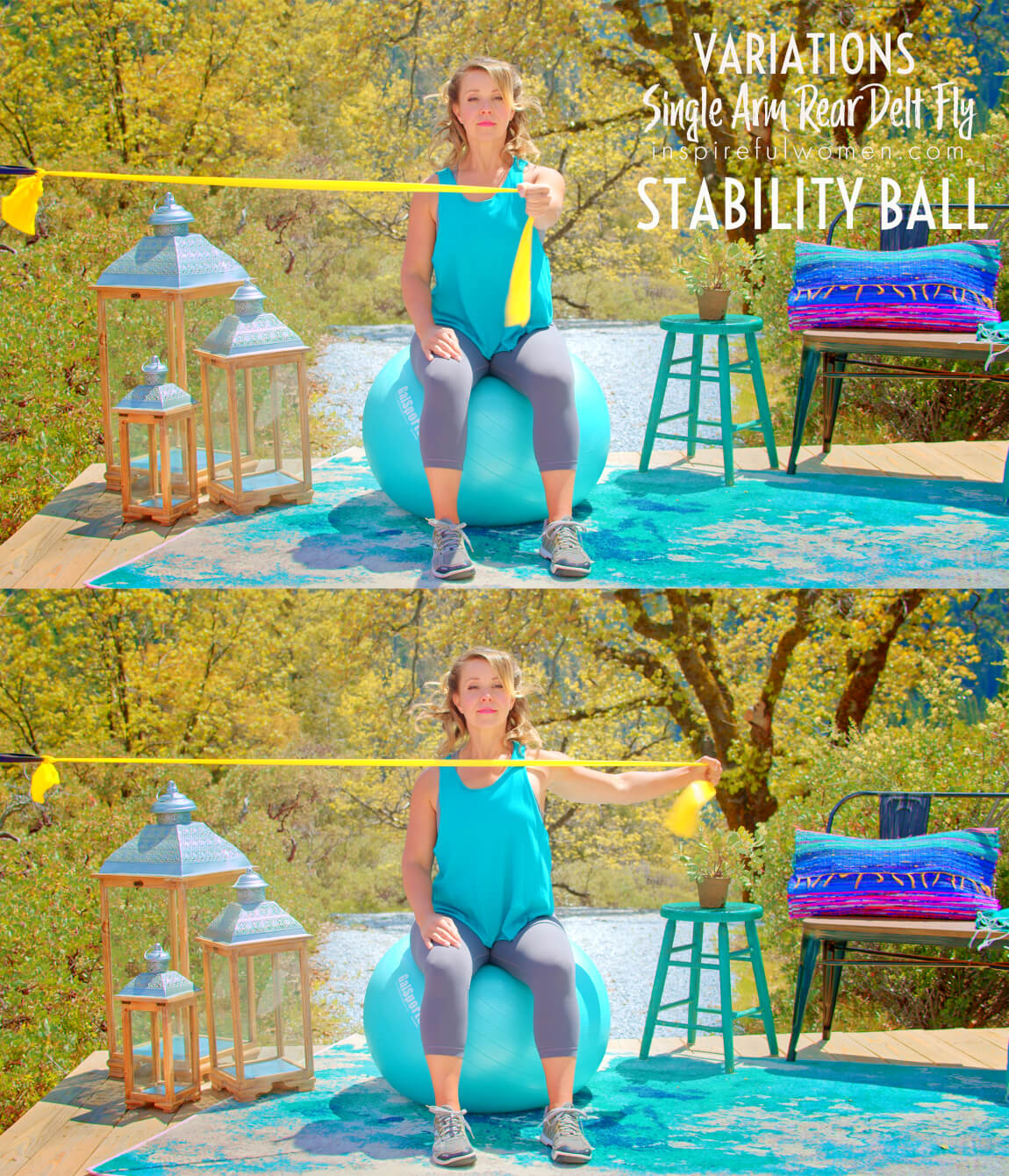
WHAT WE'RE DOING TODAY
WHAT & WHY
BENEFITS OF TRAINING THE Rear Delt
WHAT
The Rear Deltoid Fly works the muscle on the back of the shoulder. To target the rear (or posterior) part of the deltoid muscle the arm is lifted up to about the level of the shoulder and moved back, and slightly behind the torso.
Something I like about this exercise is it's one of the few exercise to work the back of our shoulder in a standing position. Why is this great? Because being bent over is a more challenging position for our body to hold! Nice to have a break once in awhile.
This exercise is a nice change from the movements that move the arm forwards or up. The backward movement of the arm works many of the muscles of the upper back, and moving the straight arm back will stretch the muscles on the front of the chest and the biceps. This feels good after sitting at a computer all day - it can be used to loosen up knots in your upper back by increasing blood flow to the area.
WHY BOTHER DOING IT?
WHY
WHY DO WE EVEN CARE?
THE BACK OF THE SHOULDER MATTERS TOO
The muscles on the back of the upper body are frequently overlooked in exercise programs. A lot of time is spent on exercises that involve lifting the arms up, pushing them forward, and pulling them down. It is important to include exercises that target the muscles of the back of the body in order to balance out the exercises that focus on the muscles in the front of the body.
Some of the most important muscles of the upper body are the muscles that attach to the shoulder blades (of which the rear or posterior delt is one). These muscles are responsible for keeping the shoulders healthy, the ability to move your arm through its full range, and hold you in upright posture. Overworking the muscles on the front of the body and underworking the muscles on the back of the body can lead to a stooped posture, upper back, neck and shoulder pain.
It is extremely rare that we only use one muscle at a time. Most movements involve many muscles working in coordination. This is especially true for movements of the arm. The main job of the shoulder is to move and position the hand. Moving the arm involves coordination between the arm and the shoulder blade. This exercise is good for targeting the muscles that control the movements of the arm and the shoulder blade and training them to work together for healthy arm movement.
EVERYDAY LIFE
EVERYDAY LIFE &
MUSCLE FUNCTION
HOW WE USE OUR rear deltoid IN EVERYDAY LIFE
1. REACHING BEHIND THE BODY
- Tending a kid in the back seat
- Reaching into the back pocket
- Bringing the arm back to throw a ball (overhand)
2. PULLING
- Pulling a car door shut
- Pulling a refrigerator door open
3. ROTATING THE UPPER ARM SO THAT THE SOFT UNDERSIDE IS FACING FORWARD AND/OR UP (EXTERNAL ROTATION)
- Reaching the back of your head for washing, brushing your hair
- Pulling a shirt off over your head
- Reaching the top of a zipper
- Scratching your upper back
- Turning your outstretched arm with the palm up (need shoulder external rotation and forearm supination)
- Receiving change in the palm of the hand
4. WORKS WITH THE ANTERIOR, AND MIDDLE FIBERS OF THE DELTOID TO STABILIZE THE SHOULDER JOINT DURING ALL ARM MOVEMENTS.
- Improves the ability to lift and carry heavy objects (the arm has a stable base to work off of).
- Injury prevention
HOW TO FEEL WHAT MUSCLE IS WORKING
How to Feel What Muscle is Working
Take your opposite hand and place it on top of your shoulder. You should feel a hard, flat surface right on top close to the shoulder joint. That is part of the shoulder blade called the acromion process. Drop your fingers right below the bony ridge. Hold your upper arm up out to the side a little more than halfway between being right by your side and being at shoulder level (approximately 50 - 60 degrees of abduction) with the elbow bent. Push the upper arm back. You should feel the rear fibers of the deltoid activate under your fingers. It can help to push your elbow into the back of the chair or a wall.
SCIENCY STUFF
SCIENCY STUFF
SPIFFILICIOUS FACTS ABOUT MUSCLES & MOVES
The rear portion of the deltoid originates on the scapula (shoulder blade), crosses the shoulder joint at the back and attaches on the humerus (upper arm bone). The muscle moves the arm back from being in front of the body and externally rotates the arm. It is most active when the arm is lifted out to the side and away from the body (in abduction - so the arm is moving closer to horizontal abduction and extension).
ALLLL MUSCLES & WHEN
ALL MUSCLES WORKING & WHEN DURING THE Standing Single Arm Rear Delt Band Fly
The legs and torso muscles work to stabilize the body as the band is pulled back.
The movement begins with retraction and depression of the shoulder blade by concentric contraction of the mid and lower traps, rhomboids, serratus anterior, lats, and pectorals. The triceps is active (mostly isometrically) to prevent the elbow from bending under the pull of the band.
The scapular retractors and depressors will stabilize the shoulder blade isometrically. The posterior deltoids, teres major, (triceps - if the load is heavy) will contract concentrically to pull the arm up out to the side and back. The arm will be parallel to the floor and to the side and will move slightly backward. As the arm moves back the quadratus lumborum and obliques will work to hold the torso still against the resisted rotation.
The deltoid works eccentrically to lower the arm back to the beginning position for the next rep.
PIN IT FOR LATER!
